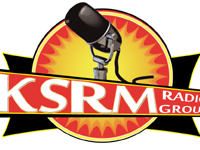Alaska’s job count was up 0.4 percent in February from the previous year, an increase of 1,300. The state’s seasonally adjusted unemployment rate fell two-tenths of a percentage point, to 5.8 percent. The comparable U.S rate remained at 3.6 percent.
None of the February numbers capture the impact of the evolving COVID-19 pandemic because the state and national economies had not yet been affected. Some initial economic disruption will be visible in the March data, but larger impacts will show up starting with April data.
As of February, Alaska continued to add jobs. Growth was widespread in the private sector, with only information and manufacturing reporting losses. In Alaska, manufacturing is primarily seafood processing, and job numbers can vary considerably by month and year.
Even at an improved 5.8 percent, Alaska retains the highest unemployment rate in the nation, according to statistics from the U.S. Bureau of Labor.
Karinne Wiebold, state economist, with takeaways on Alaska sitting at the bottom of the nation despite recent growth: “Basically, we’re just growing slowly. We’ve been adding jobs since September of last year. We’ve pulled out of our longest recession, but this growth is pretty slow. We’re not roaring out of it. At this point, we’re seeing growth in almost all industries and in all areas around the state.”
Most industries added jobs, with the strongest gains in oil and gas (500 jobs), health care (500) and construction (400). Employment fell in state and local government, while federal government added 100 jobs, primarily due to the 2020 Census. Regional job growth was strongest in the Northern Region, primarily connected to oil and gas.
March numbers will be made public on April 17, according to the Alaska Department of Labor and Workforce Development. The full report can be seen here.
